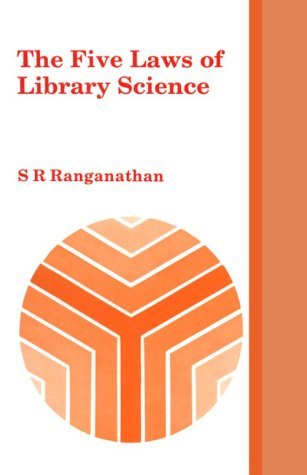What do you think?
Rate this book


449 pages, Paperback
First published January 1, 1996
1. Books are for use [not preservation]
2. Every reader his or her book [books are for everyone, not just for an elite]
3. Every book its reader [books should be as accessible as possible for the reader, keep the stacks open]
4. Save the time of the reader [the staff should be efficient and helpful]
5. A library is a growing organism
An organism which ceases to grow will petrify and perish. … A growing organism takes in new matter, casts off old matter, changes in size and takes new shapes and forms." section 701 p. 326